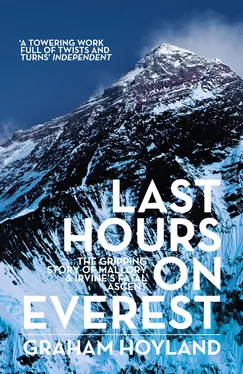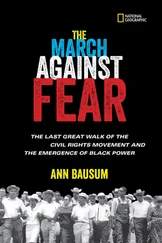The Alpine Club was founded in London in 1857. Simon Schama in his Landscape and Memory notes that the members of the Club were predominantly upper-middle-class rather than aristocratic, and that they thought of themselves as a caste apart, a Spartan phalanx, tough with muscular virtue, spare with speech, seeking the chill clarity of the mountains just because, as Leslie Stephen, who became the club’s president in 1865, put it, ‘There we can breathe air that has not passed through a million pairs of lungs.’2
It is curious that so many writers had brothers who became Himalayan climbers: Greene, Spender, Auden. It is interesting, too, that it seemed to be the left-wing intellectuals who wanted to place themselves above the masses. John Carey writes:
The cult of mountaineering and alpine holidays among English intellectuals … seems to have been encouraged by Nietzschean images of supremacy. Climbing a mountain gave, as it were, objective expression to the intellectual’s sense of superiority and high endeavour, which otherwise remained rather notional.3
There is a danger in this search for purity that surfaced later in the Nazi fascination with mountain climbing.
The pace of Alpine climbing accelerated, with Edward Whymper knocking off the Col de Triolet, the Aiguille de Tré-la-Tête and the Aiguille d’Argentière in one week in 1864 with guide Michel Croz. His 1865 book Scrambles in the Alps was a sensation, describing the first ascent of the Matterhorn and the ensuing accident that killed four of his companions. Suddenly, the new sport assumed a dangerous new edge in the public mind, and the short but golden age of Alpine climbing was over.
Back in England there was a disaster high on Scafell Pinnacle in 1903 that Somervell and Mallory would have been very well aware of, as it was much discussed at the time. The tradition then was that ‘the leader must not fall’, because the hemp ropes climbers used were not strong enough to take much of a shock, and modern protection devices such as Friends – camming devices that expand into cracks in the rock and to which a climbing rope can be attached – were as yet undreamt of. All that the climbers could do was to loop the rope over a spike of rock, if available, or jam a rock into a crack and pass the rope behind it. In the 1903 accident, there was no belay point available, and four men fell 200ft to their deaths.
As we shall see, George Mallory would have had the need for a belay very much in mind on 8 June 1924 as he scanned the cliffs above him for a route to the top of Mount Everest.
I was a bookish child, and rather shy. I didn’t quiz Uncle Hunch about his story, but when we got home from Aunt Dolly’s memorial service I found out more about him, Mount Everest and his friend Mallory in the memoir that he wrote titled After Everest . I have the book next to me, still wrapped in my grandmother’s sewn cover. His climbing life, including Mount Everest, takes up less than a third of the pages, and he makes it clear that his medical missionary work was far more important to him. So many Everesters keep going back and back to the mountain of their obsession, and it is entirely typical of him that he was able to develop himself away from it.
One of the problems of assessing multi-talented individuals is that most of us can only appreciate one aspect of them at a time. If anyone has heard of T. H. Somervell nowadays they might think of him as one of Mallory’s fellow-climbers on Everest, or maybe as a painter of mountain landscapes. Some readers in India might still remember his medical work in their country, but he excelled in several fields and was one of the most interesting characters on those early Everest expeditions.
He was born in 1890 to a well-to-do evangelical family in Kendal who owned K Shoes, a prosperous boot-making company. At Cambridge he at first derided modern art, then adopted it. Similarly, he toyed with atheism, joining a society named the Heretics, and ‘for two years I strenuously refused to believe in God, especially in a revealed God’. 1Afterwards he felt there was something missing from his life, and felt that his atheist fellow students were ‘wallowing in an intellectual nowhere’. After a chance prayer-meeting he rediscovered his faith and became for a while a passionate evangelical. This mellowed into a steady religious faith that remained with him and informed all the major decisions of his life. It is almost as if the young Somervell had to experiment with opposites, push hard in contrary directions, before he could find his place in both art and religion. Perhaps the extreme horror of his war-time experiences swung him towards extreme faith.
I wanted to know how he began climbing. The 18-year-old Somervell had taken to solitary walking in his native Lake District, and one day saw a party of rock climbers. He followed them up their route on his own, and when he reached the top he was ticked off for climbing without either a companion or a rope. On buying one of the Abraham brothers’ guidebooks he was delighted to realise he’d done a climb described as ‘Difficult’. He continued going rock climbing, and this eventually led to the Alps, where one of his early climbs had an ecclesiastical flavour: he teamed up with a parson and the Bishop of Sierra Leone. Unfortunately, the bishop slipped off an overhang and dangled in mid-air, swinging like a pendulum. Somervell started to lower him but the noose around his waist was loose, the unfortunate cleric raised his arms and the rope slid off. He hung by his hands alone, and ‘certain death was beneath him if he could not hold on.’ 2Somervell redoubled his lowering, and got the bishop to the safety of a snow-slope before his strength gave out. This calm rescue of another climber foreshadowed his rescue of porters on Everest in 1924.
Next came his experience of the army. After Gonville & Caius College, Cambridge, and qualification as a surgeon at University College Hospital, London, he joined up in early 1915 and went to the Front. This experience had a profound effect on him, as it did on other members of the Everest expeditions. His casualty-clearing station, the 34th, was on the Somme Front, at Vecquemont, between Amiens and Albert. Another Cambridge man, Second Lieutenant George Mallory of the 40th Siege Battery, was not far away at Pioneer Road, Albert. Mallory’s job as an artillery officer was to pound the enemy lines with high-explosive shells in preparation for the greatest British offensive of the war, when 300,000 men attacked the Germans on 1 July 1916.
It was a disaster. Somervell’s clearing station, with its two surgeons per six-hour shift, was expected to deal with a thousand casualties; instead, streams of motor-ambulances a mile long brought nearly 10,000 terribly wounded young men after the attack. The camp, in a field of five or six acres, was completely covered with stretchers. The surgery was a hut with only four tables, and Somervell had to walk among the victims and choose which they could try to save.
Occasionally, we made a brief look around to select from the thousands of patients those few fortunate ones whose life or limbs we had time to save. It was a terrible business. Even now I am haunted by the touching look of the young, bright, anxious eyes, as we passed along the rows of sufferers.
Hardly ever did any of them say a word, except to ask for water or relief from pain. I don’t remember any single man in all those thousands who even suggested that we should save him and not the fellow next to him … There, all around us, lying maimed and battered and dying, was the flower of Britain’s youth – a terrible sight if ever there was one, yet full of courage and unselfishness and beauty. 3
Beauty seems an odd word to use about this most grotesque of wars, and it is worth being alert to it, as it is relevant to our subject. Somervell goes on to explain:
Читать дальше












